
The Barrier Reef is Still in Hot Water
;re trapping more heat, of which 90% goes into the oceans. Antarctic sea ice is not reforming as it should after last summer. Coral restoration efforts in the United States had to literally pull their baby corals out of the sea to try to keep them alive, as the water was too hot to live in.The North Atlantic Ocean is far warmer than it should be, amid a record-breaking northern summer. After the equinox next month, it will be our turn to face the summer sun once more.Is the Great Barrier Reef in danger? Of course it is. We should not pretend things are normal and can be handled routinely. This year
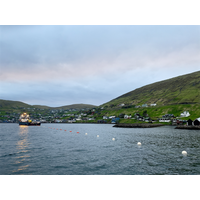
Minesto's Dragon 12 Project Powers Forward with Cable Installation Completion
Minesto said Wednesday it had successfully completed the first phase of Dragon 12 (1.2 MW) offshore installation in Vestmanna, Faroe Islands. The 3.4 km main subsea cable was laid on the seabed, from the onshore grid connection point to the offshore installation node. After transit across the North Atlantic Ocean to Vestmanna, the cable installation work kicked off and was completed Wednesday. The cable installation was completed in a 22-hour operation. “This cable is the highest valuable component of the infrastructure, and it’s a major milestone to have it safely installed. The installati
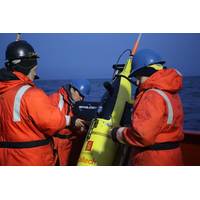
Scientists Find Rare Window Where Carbon Sinks Quickly Into the Deep Ocean
shows that carbon dioxide produced by human activities is making its way into the deep ocean. One way is through chemistry: Carbon dioxide dissolves in water, creating carbonic acid. Living creatures in the ocean are another.A view into the Drake PassageOceanographers have long pointed to the north Atlantic Ocean and the Southern Ocean as places where surface waters are moved to depth, taking large volumes of carbon with them. However, recent work has shown that this process may actually be dominated by only a few areas – including the Drake Passage.Despite its being one of the most famous stretches

Inmarsat Provides Connectivity for OceanGate's 2021 Titanic Survey Expedition
Expedition was connected by Inmarsat’s satellite communications. Inmarsat kept the OceanGate Expeditions crew connected with team members and support services during the six-week expedition to document the maritime heritage site located over 400 miles off the coast of Newfoundland in the North Atlantic Ocean.“The OceanGate Expeditions’ Titanic Survey Expedition has taken Inmarsat full circle,” said Eric Griffin, VP Offshore and High End Fishing, Inmarsat. “In response to the sinking of the Titanic and the appalling loss of life, the 1914 Safety of Life at Sea (SOLAS) Convention
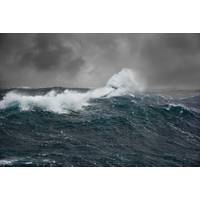
A Net-zero Future Depends on the Ocean’s Ability to Absorb Carbon
(the tiny plants and animals that feed everything from mussels to whales) store carbon, so their behaviour and biology become a critical factor in the climate discussion.We urgently need better observations of the ocean’s continued role as our heat and carbon sink.Shifting carbon sinkThe North Atlantic Ocean is the most intense carbon sink in the world: 30 per cent of the global ocean’s carbon dioxide removal occurs right in Canada’s backyard. If we extend Canada’s net-zero calculation to our exclusive economic zone (waters within 200 nautical miles of our coast), our net carbon

Kraken Robotics Wraps Third OceanVision Survey Campaign
and imaging the seabed in and around Atlantic Canada at resolutions never before seen. "The KATFISH system continues to produce excellent results and astounding images. I was especially pleased to see the successful real-world testing of our ALARS system. Sea conditions in October in the North Atlantic Ocean are far from ideal, and the combination of the ALARS and the Tentacle Winch allowed our team to safely and efficiently launch and recover the KATFISH, minimizing risk to personnel and to equipment, and significantly increasing our operational envelope.”“Kraken looks forward to

Florida Current is the Weakest Its Been in a Century
sea level change, used a connection between coastal sea level and the strength of near-shore currents to trace the evolution of the Florida Current, a key component of the Gulf Stream. The Gulf Stream flows north along the Southeast Atlantic Coast of the United States and eventually east into the North Atlantic Ocean, carrying heat, salt, momentum and other properties that influence Earth’s climate. Because nearly continuous records of sea level stretch back more than a century along Florida’s Atlantic Coast and in some parts of the Caribbean, he was able to use mathematical models and simple
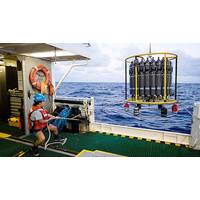
BIOS: North Atlantic Carbon Sink Shrinking Due to Warming
An analysis of North Atlantic Ocean water masses has made it clear that the effects of a warming planet extend beyond biology—they impact the physics of ocean circulation, too. The research, recently published in Nature Climate Change, was conducted by scientists from the University of British Colombia, the Bermuda Institute of Ocean Sciences (BIOS), the French Institute for Ocean Science at the University of Brest, and the University of Southampton.One particular layer in the North Atlantic Ocean, a water mass called the North Atlantic Subtropical Mode Water (STMW), represents around 20% of the
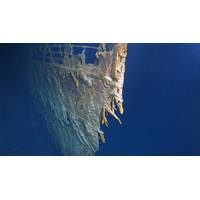
First Manned Dive to the Titanic in 14 Years
A groundbreaking expedition in early August led a team of experts and scientists 3,810 meters below the ocean's surface to the Titanic's final resting place at the murky depths of the North Atlantic Ocean.The series of five dives over eight days aboard a high-tech Triton 36,000/2 manned submersible Limiting Factor were the first to carry humans to the historic wreck site in 14 years.Patrick Lahey, Triton Submarines president and Co-Founder, and pilot for three of the five dives, said, “The most fascinating aspect was seeing how the Titanic is being consumed by the ocean and returning to



 February 2024
February 2024





